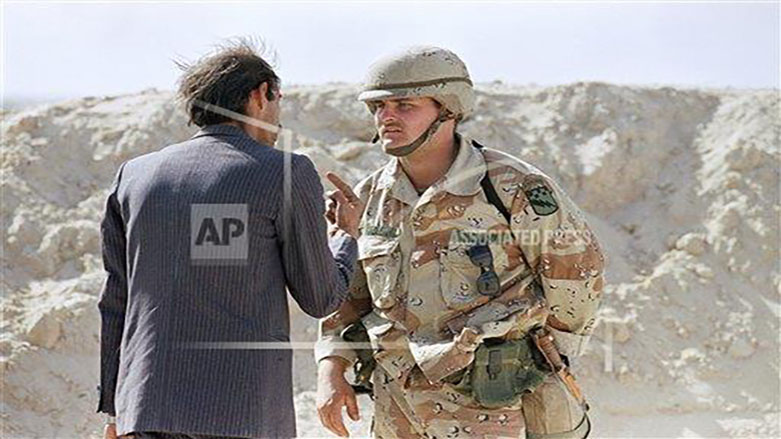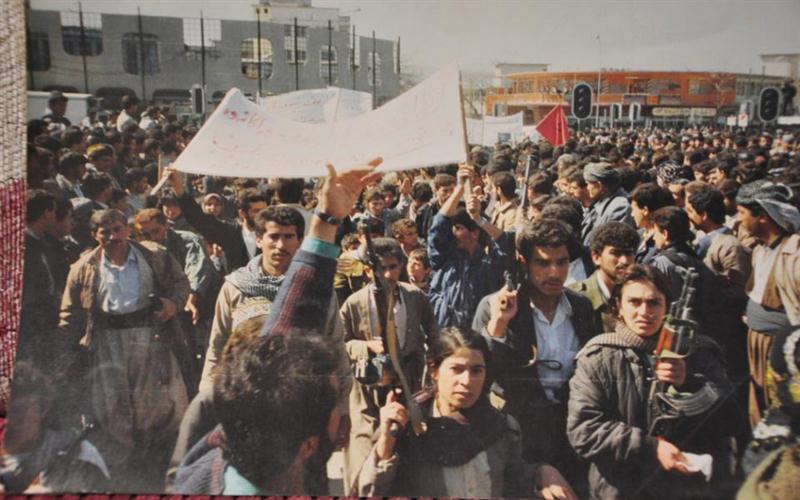'Surrender' at Safwan: 25th Anniversary

Read the previous reports in the series: Road to Independence: 25th Anniversary and Pulling Punches: 25th Anniversary
The USS Missouri is one of the few commonalities between World War II and the 1991 Gulf War. World War II ended after four years of intense combat, when Gen. Douglas MacArthur accepted Japan’s surrender on the deck of the USS Missouri. On behalf of the Emperor, Japan’s Foreign Minister signed a formal surrender document.
The USS Missouri last saw service in the 42-day Gulf War. In his autobiography, It Doesn’t Take a Hero, Gen. Norman Schwarzkopf explained that he had wanted to use the battleship for Iraq’s surrender. That proved impractical, and the ceremony took place on March 3 in a tent at Safwan Airfield in southern Iraq.
Tokyo’s surrender in 1945 clearly marked the Allied defeat of Japan. But Baghdad’s surrender in 1991 was a murky, ambiguous affair that laid the ground for a decade of troubles.
Saddam Hussein first balked at sending anyone to Safwan, and no top Iraqi official attended the event. Schwarzkopf recognized no name in the Iraqi delegation.
Lt. Gen. Sultan Ahmed Hashim al-Tai headed the delegation. Tai was the Army Chief of Staff. He had been the top military officer in Baghdad’s genocidal Anfal campaign in Kurdistan. Iraq’s Anfal campaign entailed the use of poison gas in Halabja and elsewhere; the destruction of 90 percent of Kurdish villages; and the murder of upwards of 180,000 Kurds.
At Safwan, Schwarzkopf read Tai and the other Iraqi officers a list of demands to govern a permanent ceasefire. Generally, Tai readily accepted them. The exception was the demand to release those Kuwaitis and third party nationals who had been taken hostage, as Iraqi forces withdrew from Kuwait. Tai balked, and over 600 people remained missing until 2004, when the remains of roughly half were discovered and repatriated.
The Iraqi officers had arrived at Safwan “arrogant and cocky,” one Pentagon official told this author. They were ignorant of the extent of Iraq’s losses. After Schwarzkopf asked for a list of US prisoners of war held by Iraq, they asked for a list of Iraqis held by the US. They were shocked, when told that there were 60,000. The Iraqis also had no idea how far north into Iraq US forces had advanced. When shown the proposed ceasefire line, they asked, “Why should we withdraw from territory we occupy?”
The talks contain one significant oddity. Toward the end, Tai asked for permission to fly Iraq’s helicopters, claiming that roads and bridges had been destroyed and officials needed helicopters for transportation.
Schwarzkopf’s response was surprising, “As long as it is not over the part we are in, that is absolutely no problem,” he said. “So we will let the helicopters, and that is a very important point, and I want to make sure that’s recorded, that military helicopters can fly over Iraq. Not fighters, not bombers” (emphasis added.)
Tai was surprised, “So you mean even the helicopters that are armed in the Iraqi skies can fly, but not the fighters?” (emphasis added.)
Schwarzkopf replied, “I will instruct our Air Force not to shoot at any helicopters that are flying over the territory of Iraq where we are not located. If they must fly over the area we are located in, I prefer that they not be gunships, armed helos, and I prefer that they have an orange tag on the side as an extra safety measure.” (emphasis added.)
Tai intended no such thing and assured Schwarzkopf it would not happen.
Schwarzkopf went out of his way to tell Tai that Iraq could fly helicopters. That was particularly risky, from a US perspective, when Schwarzkopf said that Iraq could even fly helicopters over US troops. Schwarzkopf soon denied having said it—but the declassified transcript shows that he did.
“At the war’s end,” a senior US military officer told this author many years ago, “The uniformed services unanimously thought that there would be a coup, soon—within three or four weeks. It was such a unanimous view that probably some intelligence agency—CIA, DIA, or Centcom intelligence—had put out a strategic estimate.”
A retired DIA officer recently explained to K24 that US intelligence agencies believed that Saddam would fall as a result of his defeat. They included the CIA, which had significant influence with the Joint Chiefs of Staff, including its chairman, Colin Powell, as well as its intelligence directorate.
Shortly before the war began, Iraqi opposition sources told this author that Saudi intelligence was promoting a coup against Saddam to be led by the head of Iraq’s helicopter squadrons. They also suspected that the plot was run by Saddam’s intelligence, in the same fashion that Soviet intelligence in the 1920s penetrated and neutralized its opposition in a notorious operation, known as “The Trust.”
By the time of the ceasefire talks, a revolt had begun in Basra, triggered by returning soldiers. It would quickly spread throughout the south, and Kurdistan would rise too. The Iraqi army, however, would use helicopters to devastating effect against those popular uprisings.
The next articles in this 25th-anniversary series will describe the uprisings, particularly in Kurdistan, before turning to their brutal suppression.
Laurie Ann Mylroie, Ph.D., taught at Harvard University and the US Naval War College. Most recently, she served as a cultural advisor to the US military in Afghanistan.
Editing by Delovan Barwari and Karzan Sulaivany



